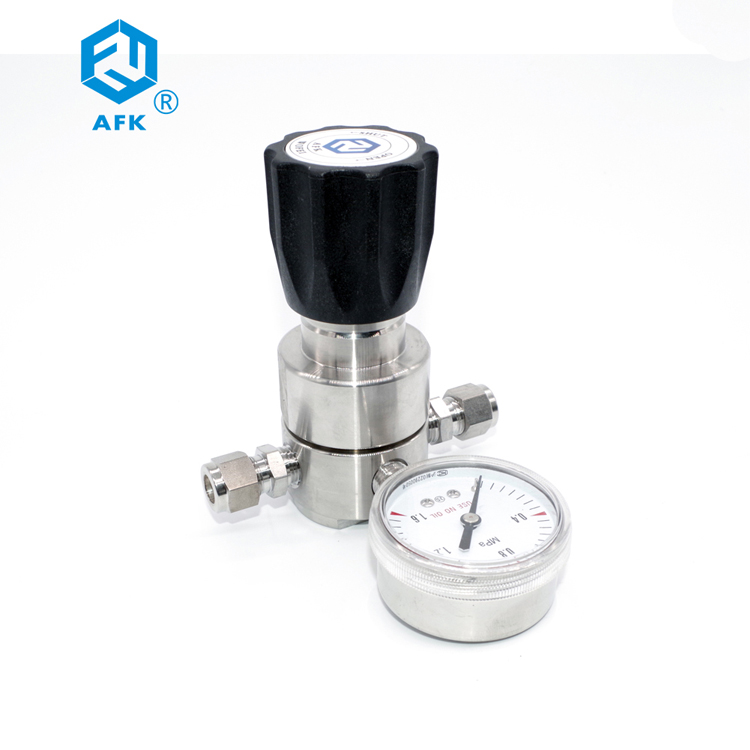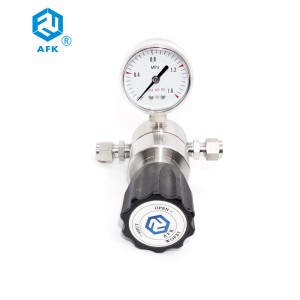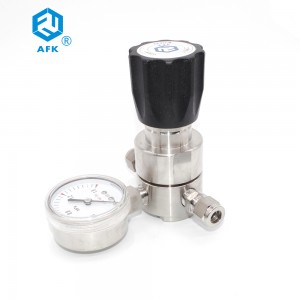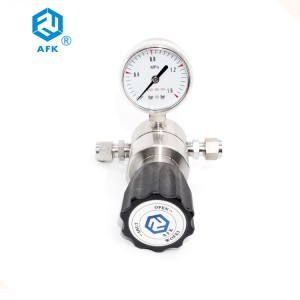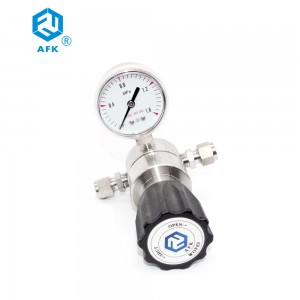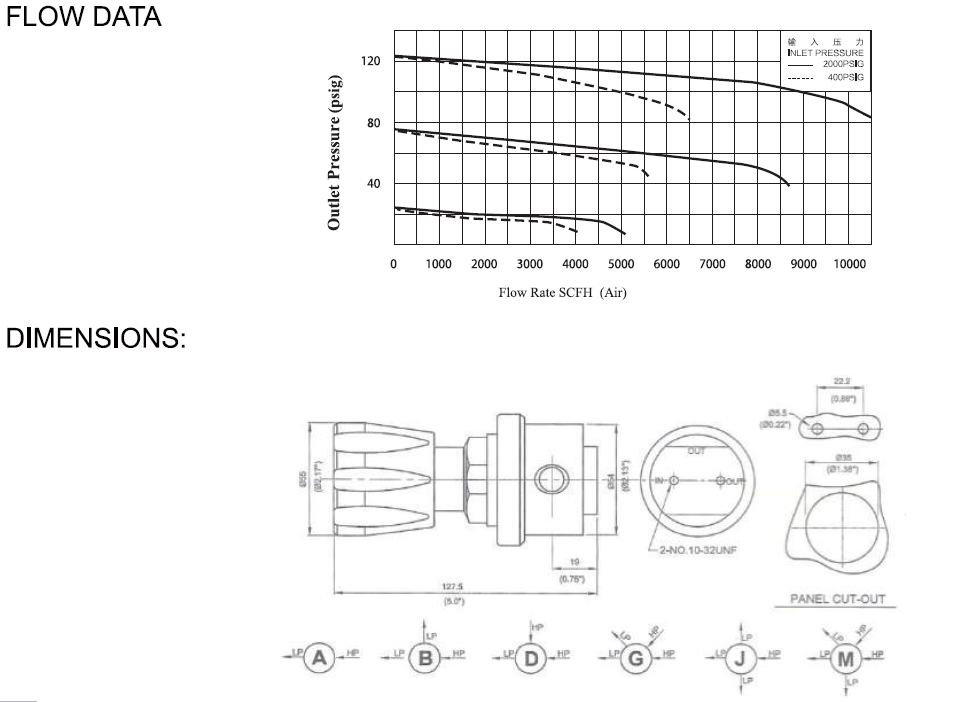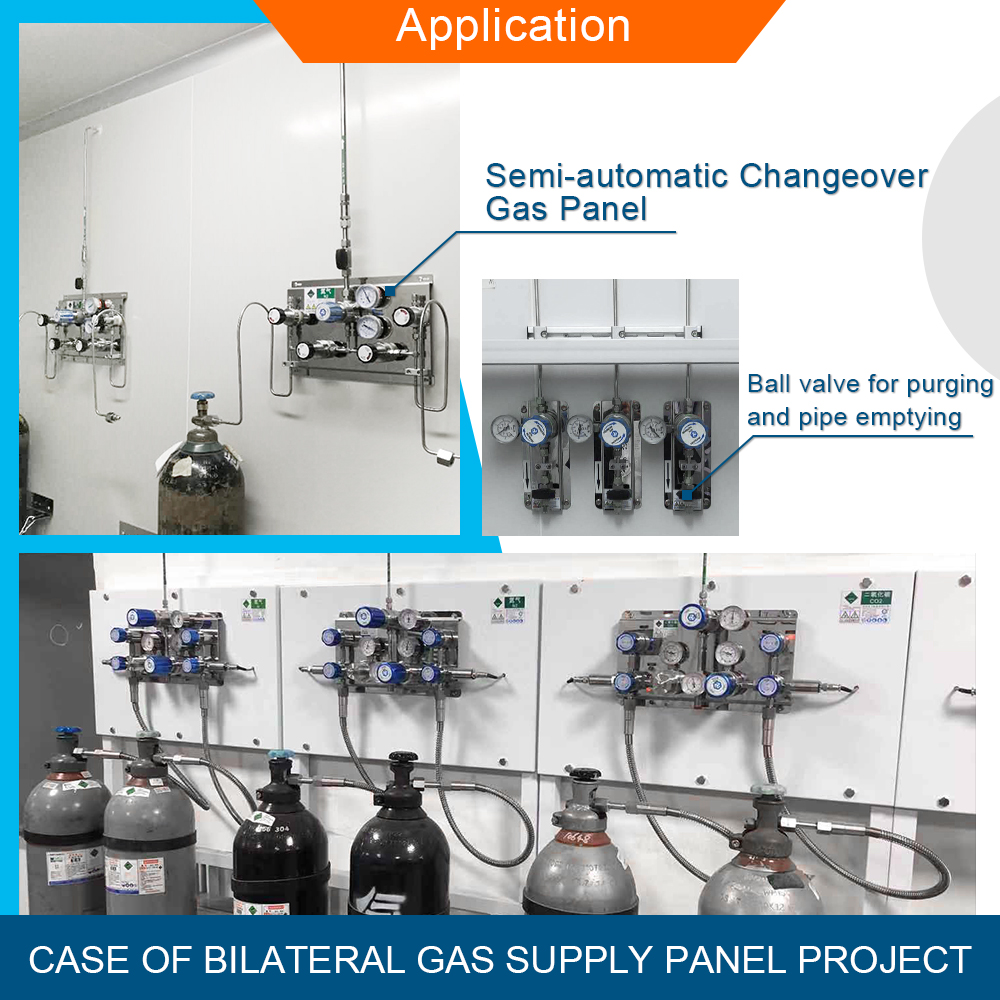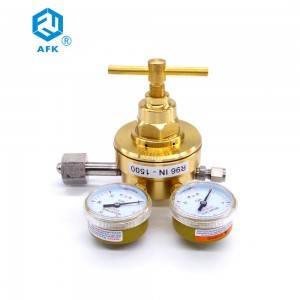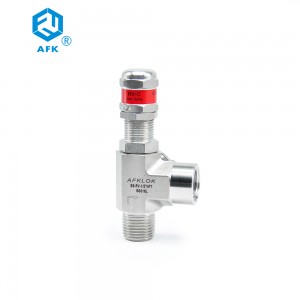Nitrogen Co2 Stainless Steel Instrument Gas Pressure Regulator
R52 Pressure Regulator
Characteristics of pressure reducer
The following factors need to be paid attention to when selecting the pressure reducer. Follow up the requirements of your specific use, and use this catalog to select the pressure reducer consistent with your parameters. Our standard is just the beginning of our service. We can modify or design control equipment to solve any problems in application.
R52 series stainless steel pressure regulator, stainless steel diaphragm reducing pressure constructure, Applicable for Lab, pharmacy and chemistry industry etc.
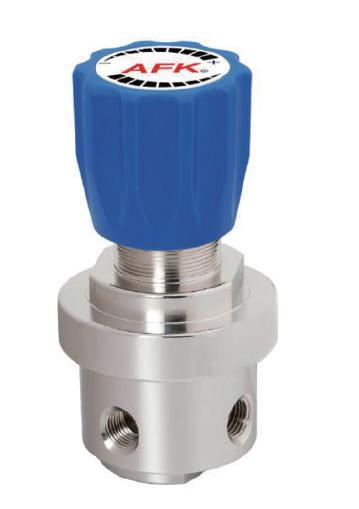
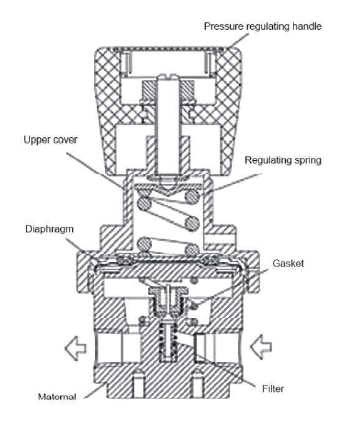
Main parts of material R52 Pressure Regulator
| 1 | body | 316L |
| 2 | bonnet | 316L |
| 3 | seat | PCTFE |
| 4 | spring | 316L |
| 5 | stem | 316L |
| 6 | o-ring | viton |
| 7 | stainer | 316L(10um) |
Features R52 Stainless Steel Pressure Regulator
| 1 | Single-Stage pressure-reducing structure |
| 2 | Metal-To-metal disphragm seal |
| 3 | Body Thread:1/4″ NPT(F) |
| 4 | Gauge,safety valve:1/4″ NPT(F) |
| 5 | Filter element installed internal |
| 6 | Panel Mount and Wall Mount avaliable |
Specifications
| 1 | Product Name | R52 Stainless Steel Pressure Regulator |
| 2 | Material | stainless steel,brass |
| 3 | Color | nickel white |
| 4 | Standard | GB |
| 5 | Max.Inlet Pressure | 3000psi |
| 6 | Max.Outlet Pressure | 250 psi |
| 7 | Safety Test Pressure | 1.5 times of Max.Inlet Pressure |
| 8 | Leakage Rate | 2 x 10-8 cc/sec He |
| 9 | CV | 0.15 |
| 10 | Working Temperature | -29℃~66℃ |
Ordering Information
|
R52 |
L |
B |
G |
G |
00 |
00 |
02 |
P |
|
Item |
Body Material |
Body Hole |
Inlet Pressure |
Outlet Pressure |
Pressure Guage |
Inlet size |
Outlet size |
Mark |
|
R52 |
L:316 |
A |
G:3000 psi |
G:0-250psig |
G:Mpa guage |
00:1/4 “NPT(F) |
00:1/4 “NPT(F) |
P:Panel mounting |
| B:Brass |
B |
M:1500 psi |
I:0-100psig |
P:Psig/Bar Guage |
00:1/4 “NPT(F) |
00:1/4 “NPT(F) |
R:With relief valve |
|
| D | F:500 psi |
k:0-50psig |
W:No guage |
23:CGA330 |
10:1/8″ OD |
N:With Needle valve |
||
| G |
L:0-25psig |
24:CGA350 |
11:1/4″ OD |
D:With diaphragm valve |
||||
| J | Q:30″Hg Vac-30psig |
27:CGA580 |
12:3/8″ OD | |||||
| M | S:30″Hg Vac-60psig |
28:CGA660 |
15:6mm OD | |||||
| T:30″Hg Vac-100psig | 30:CGA590 | 16:8mm OD | ||||||
| U:30″Hg Vac-200psig | 52:G5/8-RH(F) | 74:M8X1-RH(M) | ||||||
| 63:W21.8-14RH(F) | Other type is available | |||||||
| 64:W21.8-14LH(F) | ||||||||
| Other type is available |
In the process of chemical experiments, often produce a variety of unpleasant, corrosive, toxic or explosive gases. These harmful gases, such as the timely exclusion of outdoor, to cause indoor air pollution, affecting the health and safety of laboratory personnel; affect the accuracy and service life of instruments and equipment, therefore, laboratory ventilation is an indispensable component of the PCR laboratory design. In order to keep laboratory staff from inhaling or swallowing some toxic, pathogenic or unknown toxic chemicals and organisms, there should be good ventilation in the laboratory. To prevent some vapors, gases and particles (smoke, soot, dust and gas suspension) from being inhaled, contaminants shall be removed by means of fume hoods, fume hoods, and local exhaust.
